Chaitanya Mahaprabhu and Raganuga Bhakti part four
Mahanidhi Swami
- Kamanuga Raganuga Bhakti Sadhana
In three verses only (Brs. 1.2.294-296), Srila Rupa Goswamipada explains the practice of raganuga-bhakti. From these key verses, many more teachings and books on raganuga-bhakti have been written by Sri Jiva Goswami, Srila Narottama dasa, Srila Visvanatha Cakravarti, and especially Srila Raghunatha dasa Goswami. This essay series is based on the teachings of these Gaudiya Vaisnava Mahajana acharyas.
RESIDENCE IN VRAJA (continued from part three)
Regarding the uniqueness of living in Vraja Mandala, the Padma Purana (patala-khanda) says, “Anyone who spends even one day in Mathura/Vrindavana will attain Hari-bhakti, aho madhupuri dhanya, vaikunthac ca gariyasi, dinam ekam nivasena, harau bhaktih prajayate.” (Brs. 1.2.237) The Brahmanda Purana says, “One achieves the bliss experienced at the stage of prema just by touching Mathura, parananda-mayi siddhir mathura-sparsha-matratah.” (Brs. 1.2.212)
Of course, this will never ever happen just by living a day in Mumbai, Moscow, Manhattan or anywhere in this maya jagat! The word mathura in Mathura-mandala means “to churn, spin or agitate”. And that’s exactly why residence here is so very special, because Vraja-dhama has the power to agitate one’s mind with thoughts and feelings for Krishna, and make one forget everything else!
From my 29 years of continuous residence in Vrindavana, I can personally say, that unlike anywhere else in the world, Vrindavana has a distinctive other worldly atmosphere or ambience. There is some special enchantment in Vraja that practically every visitor feels upon coming here. Devotion to God is imperceptibly floating in the air. It’s all-pervasive, touching every heart with a drop of joy. It’s the kind of happiness every heart hankers for. This is the taste of Krishna bhakti, and this Vrindavana is the land of Krishna’s love, waiting to embrace all who venture forth.
In Bhakti Ratnakara (chapter 5), Sri Raghava Goswami, a resident of Govardhana, became completely impatient and overwhelmed with bliss when he started narrating the glories and benefits of being in Vraja. He said, “One who bathes anywhere in Vraja Mandala, or sees the Holy Places there is freed from his sins.” (Padma Pur.) “Simply by touching the dust of Vraja, one can attain ecstatic love for Krishna.” (Brahmanda Pur.) “Living in Vraja Mandala is possible only by the grace of Sri Krishna, for without it one can’t stay a second.” (Adi Pur.)
Srila Krishnadasa Kaviraja wonderfully describes the transcendental position the Vrindavana situated right here right now:
“Beyond all spiritual abodes is the abode of Vraja-loka, or Sri Gokula, which is also called Sri Goloka, Shvetadvipa and Vrindavana. Like Sri Krishna’s transcendental body, Gokula is unlimited, supreme and all-pervading. Vraja-loka spreads above and below without any restriction. Although by Krishna’s wish it manifests in the mundane universes, it only has one basic form, and not two separate ones. The soil of Vrindavana consists of thought gems and the forests are full of wish-yielding trees. But one with material eyes, sees it as a mundane place. The true form of Vraja Dhama manifests to one with the eyes of love, as a divine land wherein Krishna IS playing with His beloved gopas and gopis.” (Cc. 5.17-21)
One of best things about living in Vraja, and nowhere else in this universe, is that it enables one to see the pastimes of Radha Govinda Yugala. How is that? Shukadeva Goswami answers saying, “Sri Hari is very intimately connected with and ALWAYS PRESENT in Vrindavana, madhu-vanam yatra sannidhyam nityada hareh.” (SB 4.8.42; and 10.1.28)
Since Sri Krishna, Sri Radha and all the beautiful damsels of Vrajabhumi are still living here right now and eternally in Vrindavana, a raganuga sadhaka who lives here doing bhajana will one fine day see this:
“O, Krishna is here, living eternally in Vrindavana! And I see that Kamadeva Shyama, with His blissful smiling face, is forever increasing the lusty desires of the Vraja gopis, susmita sri mukhena vraja pura vanitanam vardhayan kama devam.” (SB 10.90.48)
In the above verse of the Bhagavata, the first line says jayati jana-nivaso devaki-janma, which means that “Krishna, the son of Devaki (second name for Yashoda), eternally lives gloriously among the cowherds of Vrindavana.” Srila Visvanatha Cakravartipada explains, “The word jayati is in the present case, meaning, “Krishna is victorious and eternally in this world—in Vrindavana, in His Holy Name, and in His Hari-katha.” (Sarartha Darshini tika)
In short, living always in Vrindavana, vraje vasa sada, means to always meditate upon Radha-Krishna’s asta-kaliya-lilas while, ideally if one can, residing in a nitya-lila sthali like Radha Kunda, Govardhana, Varsana, Nandagoan, Yavata, Seva Kunja, Nidhi Vana or others.
In this regard, Srila Visvanatha Cakravartipada says, “One must meditate upon Radha-Krishna along with Their Vraja lilas, and never meditate on Radha-Krishna without Their pastimes, sri krishna lila sahitayor evopasyatvam, na lila rahitayoh lilayam.” (Raga Vartma Chandrika II.6)
If physical residence in Sridhama Vrindavana is impossible, however, then Sri Jiva Goswamipada advises that one can live elsewhere, but always remember Radha-Govinda’s eternal pastimes in Vrindavana. Physical/mental Vrindavana is best, but only mind in Vrindavana will also bring success in bhajana.
Srila Prabhupada explains, “When one’s mind simply becomes fixed on the lotus feet of Krishna, then one’s mind becomes as good as Vrindavana. Wherever Krishna is, there also are Srimati Radharani, the gopis, gopas and all the Vrajavasis. Thus as soon as one fixes Krishna in his mind, his mind becomes identical with Vrindavana.” (Cc. 2.13.138 p.)
Although one may live outside Vrindavana, one should not be satisfied and complacent with that residence, and never become attached to it. Rather, one should intensely hanker for that auspicious day or the life when one can physically and mentally live in Vraja Dhama absorbed in Radha-Krishna Yugala bhajana
Srila Narottama dasa Thakura beautifully expresses these sentiments in his bhajana, “hari hari! kabe habo vrndavana vasi”:
“O Hari, Hari! When will I be able to live in Vrindavana, and see the beautiful radiant forms of Radha Govinda Yugala? When will I give up the happiness of sleeping in a wonderful, luxurious bed, and smear my body with the dust of Vraja, Vraja dhuli? When will I give up the desire for tasty food, and live on begged food (madhukari) in Vraja? When will I wander around the forests of Vrindavana, and sometimes take rest on the cool, sandy banks of the Yamuna? When will I find relief from the scorching sunshine under the cooling shade of Vamshi Vata? When will I sit in a kunja amidst the elevated Vaisnavas? O when will that day come, when I give up everything [and run to Vrindavana]?”
- Two Sadhanas: Sadhaka and Siddha Rupa Seva
seva sadhaka rupena, siddha-rupena catra hi
tad-bhava-lipsuna karya, vraja-lokanusaratah (Brs. 1.2.295)
Srila Rupa Goswamipada explains, “Both in his material body, and in his (mentally conceived) spiritual body should one follow in the footsteps of the people of Vraja, always desiring their feelings and activities. On the path of raganuga-bhakti one serves Radha-Krishna in one’s sadhaka-rupa, which means the present physical body, as well as in one’s siddha rupa [aka siddha deha], which means one’s internally conceived and desired body, while hankering for the feelings and specific attraction of Sri Krishna’s beloved Vrajavasi devotees and following in their footsteps.”
Second Trans: “Desiring to attain gopi/manjari bhava, one should, with his physical sadhaka body, eagerly serve and follow the example of Radha-Govinda’s eternal Våndävana associates like Sri Rupa Gosvami, Sri Sanatana Gosvami and Sri Raghunatha Dasa Gosvami. In one’s siddha-rupa, internally conceived spiritual body of a manjari, one should serve Radha-Govinda, following in the footsteps of the eternal Vrajaväsés like Sri Rupa-manjari and Rati-manjari.”
In summary, one should perform internal service (manasi-seva) through the medium of the siddha deha by following Sri Rupa-manjari and Rati-manjari. And externally as a sadhaka (sadhaka rupena), one should perform physical services like those done by Srila Rupa, Sri Sanatana Goswamis and Srila Raghunatha dasa Goswami while they lived in Vrindavana.
Sri Jiva Goswami:
“Siddha-rupa [aka siddha deha] refers to a body suitable for one’s desired service [as Radha’s manjari], and which has been developed by internal meditation. In that siddha deha, one mentally serves Radha-Krishna with a desire for the gopi-bhava of Sri Rupa or Rati manjari (tad bhava lipsuna).”
Notably, in a footnote to this verse, Shri Bhanu Swami (ISKCON), the English translator of Bhakti Rasamrita Sindhu, tells how to attain a siddha deha:
“The siddha-rupa is given by the guru, who himself is following the path of raga-bhakti, when he sees the qualification for raganuga-bhakti in a particular disciple. Along with the form [siddha deha], the guru gives the specific dress and service to Radha throughout the day.”
Comments: The raganuga-sadhaka serves with a strong desire to attain and relish the feelings i.e. dasi/gopi-bhava, the sevas and the pastimes of Sri Radha and Her intimate seva dasis like Sri Rupa-manjari and Rati-manjari. As in the physical body a sadhaka, doing murti-puja, offers different articles to Radha and Krishna according to the time of day i.e. fragrant warm water to bathe Thakuraji at sunrise. Similarly, in one’s internally conceived spiritual form (siddha rupena), a sadhaka mentally offers Radha-Madhava different items according to the needs of the time within the eight-fold daily flow of Yugala’s pastimes (asta-kaliya-lila seva).
Fixing Your Identity in Sadhaka Rupa & Siddha Rupa
All puja-manuals used in vaidhi-sadhana prescribe the practice of bhuta-shuddhi, which is a way of purifying one’s physical body by identifying oneself in a general way as a spiritual being (dasa dasanudasa).
In raga-marga, however, bhuta shuddhi consists in meditating upon a specific spiritual identity, an individual siddha deha resembling one of Sri Krishna’s eternal associates i.e. a sakhi or manjari (dasi dasi anudasi bhava). Sri Jiva Goswamipada confirms this in Bhakti-sandarbha (286): bhuta shuddhi, parshada deha bhavana.
In sadhaka rupa (my present physical form as a devotee), a raganugiya Vaisnava will perform bhuta-shuddhi by daily thinking thus: “With the humble mood and bhava of a dasi or maidservant of Radhika, I am performing all the limbs of sadhana like hearing, chanting, remembering, worshiping Radha Govinda Yugala. In siddha-deha, he will fix his eternal identity (siddha rupena) as one of Srimati Radhika’s loving handmaidens absorbed in relishing the sweet mellows of Her daily service in allegiance to the other sakhi manjaris.
The Sanat-kumara Samhita (184-187 v.) suggests this bhuta-shuddhi: “The raganuga-sadhaka should think: ‘In my eternal spiritual form (siddha deha), I reside among the delightful cowherd damsels of Sri Krishna. I am a very blissful, beautiful and charming young kishori gopi. As Srimati Radhika’s eternal maidservant, I forever arrange Her intimate meetings with Her Prana Priyatama Shyama, and I make Them happy with my artful talents, and a variety of expertly performed services. For time eternal, I will serve Yugala Kishora, all the while feeling more love for my Swamini Radha than Shyama.”
Power of Manjari Svarupa Dhyana
The practice of daily meditation (e.g., on one’s siddha deha) is both powerful and authentic. In Gita (8.6), Sri Krishna says, “At death, one will remember what he thought about most during his lifetime. And one’s dying thoughts will be attained in one’s next life.”
The Chandogya Upanisad (3.14.1) confirms this: “The way in which a jiva worships the Parama Purusha Sri Krishna in this world, he will attain that in the next life, yatha kratur asmin loke, puruso bhavati tathetah, pretya bhavati sa kratum kurvita.
Srila Narottama dasa Thakura says, “Whatever one contemplates in sadhana will be achieved upon attaining one’s siddha deha, sadhane bhaviba yaha siddha-dehe paba taha.” (P.B.Candrika 5.8)
Meditation is not only powerful, but it brings the blessings of Bhagavan. Sri Krishna personally promises fulfillment to His meditating devotees. In Uddhava-gita (SB 11.15.26), Bhagavan Sri Krishna said, “O Uddhava! A devoted person who meditates on Me, Who am also called satya sankalpa (one who always keeps His promise), he will definitely obtain the fulfillment of his desires.”
Some people say, “Meditating on one’s siddha deha is just kalpana, imagination—leading to nowhere!” But Sri Krishna’s sacred words and solemn promise above prove that such meditation is real and it will bring success!
The raganuga-sadhaka is meditating on God, the absolute Truth and supreme ultimate reality. The raganugiya devotee meditates on Radha and Krishna, and serves Them in different pleasurable ways throughout the day and night in his mentally conceived siddha deha. Meditation on Bhagavan Sri Krishna is always real, eternally perfect, and it powerfully draws the attention and blessings of bhakta-vatsalya Sri Nandanandana. All of one’s meditative practices will culminate in perfection at the stage of bhava-bhakti, wherein one will realize and see his siddha deha, and continue serving Radha-Madhava as he was doing during the stage of practice.
The Nitya Sevas of Sri Radha’s Dasis
Srila Rupa Goswamipada explains that the dasis or maidservants (aka manjaris) of Srimati Radharani expertly and lovingly serve their Swamini in 16 different ways mentioned in Ujjvala-nilamani (Sakhé-prakaraëa 88–91):
- To recite the glories of both the hero, nayaka Sri Krishna, and the heroine, nayika Sri Radha.
- To carefully create a situation in which Shyama is attracted to Radhika and vice versa.
- To induce both Radha and Krishna to approach each other.
- To surrender unto Krishna.
- To create a jovial atmosphere.
- To give Radha-Govinda assurance to enjoy Their pastimes.
- To dress and decorate both Radha and Krishna.
- To show expertise in expressing Radha-Madhava’s desires.
- To conceal the faults of Radharani.
- To cheat their respective husbands and relatives.
- To educate.
- To enable both Radha and Krishna to meet at the proper time.
- To fan Radha and Krishna.
- To sometimes reproach Radha and Krishna.
- To set conversations in motion.
- To protect Radharani by various means.
Example of Mental Seva in Siddha Rupa
In his mentally conceived siddha deha, the raganuga-sadhaka thinks that he/she is assisting Radharani. Together in a keli-nikunja in the forest of Vrindavana, Radha and the manjari are beautifully decorating the pastime bower to receive Shyamasundara. Time to time, Kishori stares down the footpath anxiously looking for Kunjabihari. When the appointed meeting time expires, however, Srimati breaks down crying.
The kinkari maidservant consoles Priyaji for some time, and then goes searching for Shyama, while intensely hankering to find Him. But alas! Kanu is nowhere to be seen, so the kinkari cries out in desperation, “O Radha Prananatha! O Parama Nagara! Where are You? Please, I beg You to reveal Yourself! Your Prana-priya Radha is crying in anguish due to Your absence. Please show Yourself to me!”
Responding to the manjari’s distressful pleas, Shyama reveals Himself. Happily, the kinkari brings Nagaraja to the love bower, and thus arranges for the blissful meeting of the Playful Pair. This is an example of service rendered internally (manasi-seva) in one’s siddha deha, siddha rupena seva.
How to Follow the Vrajavasis?
Srila Visvanatha Cakravarti: “The last line of the verse, “vraja loka anusaratah”, means one should serve Radha-Krishna in one’s physical body by following the example of Vrajavasis like Srila Rupa Goswamipada and Srila Raghunatha dasa Goswamipada. And in one’s siddha-rupa [siddha deha], one should perform mental services (manasi-seva) to the Playful Couple by following the services of Sri Rupa-manjari, Lavanga and Rati-manjaris.”
Srila Rupa Goswamipada ki jai! Srila Visvanatha Cakravartipada ki jai!
Raganuga-bhakti ki jai! Manjari Bhava Sadhana ki jai! Jai Jai Sri Radhe!

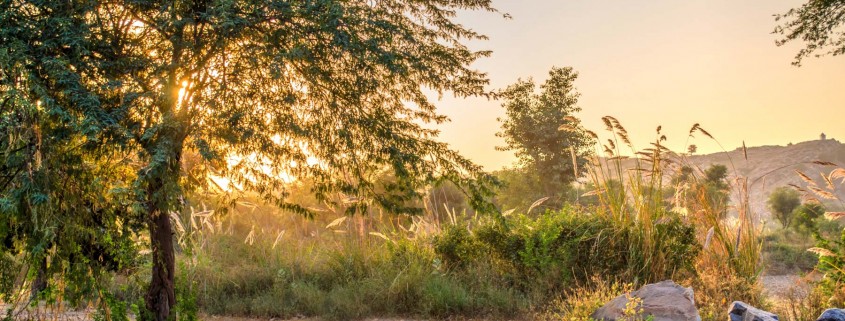
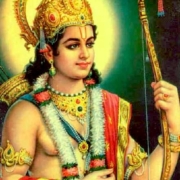
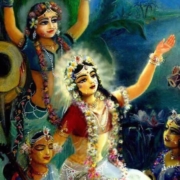
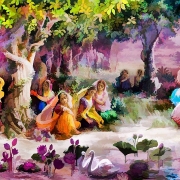
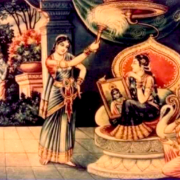


Leave a Reply
Want to join the discussion?Feel free to contribute!